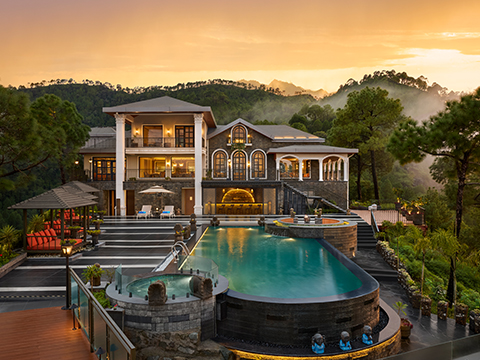JLL has appointed Jaideep Dang as Managing Director of its hotel and hospitality business. Based in Gurugram, this is Dang’s second stint with the firm.
Anupriya Bishnoi
Tell us about your new role at JLL.
I have worked with JLL previously between 2004 and 2011 in different functions. So in a way, I know the preamble of this business. In my earlier stint, we had built a robust consulting practice and provided best advice to the country’s leading hotel owners and operators. Clients trusted JLL’s value proposition and our offerings. Over the years, the industry size has grown significantly. There are many more hotels, segments and stakeholders in the business now as compared to the times when I used to work here before. I now have a wider audience to serve to. There is more business to do than ever before even as hotels continue to remain a specialized asset class in real estate. So you still need a specialized skill set. Having gained valuable experience by working with The Oberoi Group over eight years, I come back to JLL with technical on ground experience. I aim to apply all that I have learnt and build our hotels practice further. I am committed to focus on hotel transactions, hotel operator searches and other advisory services. I want to create quality and value both for the practice as well as the clients.
Where is JLL looking to grow its business in the hotel space?
What used to happen during my previous stint with JLL is very different from what is happening now. Apart from top metropolitan cities, a lot of investment is now happening in Tier-II cities. The data also shows that most international brands like Marriott, Hyatt, Hilton, Radisson, etc., have penetrated in cities such as Lucknow, Kanpur, Ludhiana, Jamshedpur, Ranchi, Surat, and many others. Improved air-connectivity has fuelled growth in domestic travel and as a result, new resort destinations are opening up. We look forward to working in these new markets. Data suggests that tier II markets will witness more new hotel openings. However from number of rooms perspective, Tier I markets will continue to rule. This means bigger hotels will be built in Tier I markets but more hotels will be built in Tier II cities. So we will focus equally in both these set of markets. We will also focus on new growth areas in the sub-continent and are equally focussed on enhancing our business in Sri Lanka, Nepal, Bangladesh and Bhutan.
Is consolidation the way forward for the hospitality industry?
Consolidation is the mantra, going forward. It is there in every industry. There comes a time when a lot of players mushroom and then there comes a cycle when they must find comfort in each other’s company. We are currently in the cycle where consolidation is the key and it is going to increase further. There are still good business opportunities in the market. They may or may not be like the Marriott and Starwood merger but these collaborations could be different in different businesses. Consolidation could also be in the form of marketing tie-ups, sharing technical platforms for a wider outreach, co-branding etc. Collaborations could be of different levels and scales, but these will exist and increase.
What’s your take on the undersupply of hotels in the country?
Quite a few hotels across different categories got built over the last decade or so, particularly in the top 7 business cities and a few prominent leisure markets. Most of these hotels are witnessing good demand and reasonable uptick in rates. Despite this
growth in performance, we observe that real estate developers are cautious to invest in greenfield hotel developments. This is because developing a hotel is much more capital intensive as compared to other real estate asset classes and if a hotel is not built,
financed and operated well, the return on investment for an investor could be lower and longer. However, a smart hotel investor/developer, who understands the hotel business, can take great advantage of this undersupply situation. That is the reason why traditional hoteliers of the country – Oberoi, Taj, ITC and other hotel companies such as Lemon Tree, SAMHI hotels and a few other real estate developers continue to add more hotels in their portfolio. Upward trend in office market absorption across business cities will further fuel occupancies and will encourage investors to build hotels especially as part of mixed-use developments. Hotel development around office campuses, metro rail corridors, airports, industrial corridors and pilgrimage cities could offer lucrative returns to the investor as well as hotel operating companies.
What’s with the room rate discrepancy in different cities?
The room rate a hotel achieves is directly proportional to the market it is operating in. For example, a certain branded hotel with similar specifications and service offering in Delhi could fetch a higher room rate as opposed to a similar hotel in Chandigarh. This is simple demand –supply economics. If the city has more visitors and hotels are well occupied, the rates will be higher. On the other hand, resorts operate differently. In resorts, product design, room sizes, personalised service also play a key role in rate positioning.









